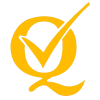When exporting glass bottles, particularly for high-value products such as spirits, quality inspections are paramount to ensure that the products meet the stringent standards of international markets. Here are the primary inspections that glass bottles undergo before they are deemed fit for export:
1. Visual Defect Inspection
Visual defect inspection involves a comprehensive examination of the entire product to identify and eliminate any defective items that do not meet quality standards. Depending on the intended use of the glass bottles, the criteria for acceptable defects can vary. The main areas inspected for visual defects include the bottle mouth, neck, body, and base.
Common visual defects include:
• Bubbles: Air bubbles trapped within the glass.
• Stones: Small inclusions of unmelted material.
• Knots: Lumps or knots in the glass.
• Cracks: Any form of cracking in the glass structure.
• Wall Thickness Variations: Inconsistent thickness in the bottle walls.
• Deformations: Warping or bending of the bottle shape.
• Seam Lines: Imperfect or misaligned seam lines from the molding process.
• Crazing: Fine, web-like cracks on the surface.
• Over-pressing: Excessive pressure during molding causing shape distortions.
• Foreign Matter: Any impurities embedded in the glass.
• Rough or Uneven Mouth: Irregularities at the bottle opening.
• Surface Roughness: Lack of smooth finish on the bottle surface.
• Twisted Base: Distortion or warping at the base of the bottle.
By conducting thorough visual inspections, manufacturers can ensure that only defect-free bottles are approved for export, maintaining high standards of product quality.
2. Dimensional and Specification Inspection
The geometric dimensions of the bottles are critical for ensuring compatibility with filling and packaging machinery, as well as meeting customer specifications. Dimensional inspections verify that the bottles fall within the specified tolerance ranges for various measurements.
Key dimensions inspected include:
• Capacity: The actual volume the bottle can hold.
• Height: The overall height of the bottle.
• Body Diameter: The diameter of the bottle body.
• Mouth Diameter and Finish: The dimensions and quality of the bottle opening and its finish.
• Neck Dimensions: Specific measurements of the bottle neck to ensure proper fit for caps or closures.
• Other Critical Dimensions: Additional measurements specific to the bottle design or customer requirements.
Accurate dimensional inspection ensures that each bottle meets the precise specifications necessary for efficient production, packaging, and end-use.
Conclusion
For manufacturers in the glass bottle industry, rigorous quality inspections are essential to maintain product integrity and meet the expectations of international buyers. By implementing thorough visual and dimensional inspections, manufacturers can identify and rectify defects, ensuring that only high-quality bottles reach the export market. This commitment to quality not only enhances customer satisfaction but also strengthens the reputation of the manufacturer in the competitive global market.

